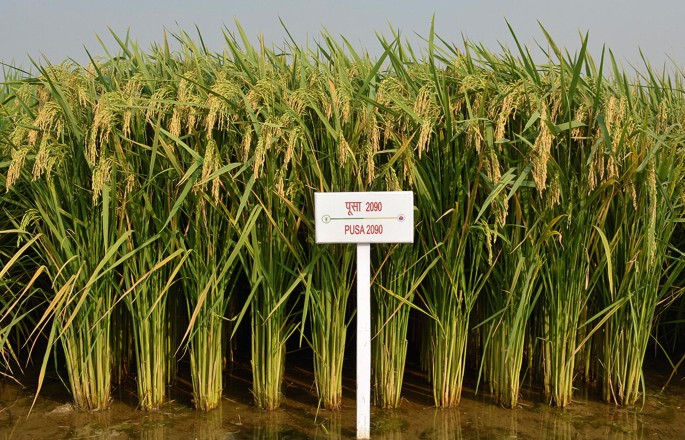Food grains play a pivotal role in providing energy and ensuring food and nutritional security. However, the aftermath of crop harvesting, both on and off the farm, leads to substantial residue accumulation. In northern India, particularly Delhi, the annual challenge of ‘on-farm’ burning, commonly known as stubble burning, contributes significantly to air pollution.
In response to this persistent issue, the Indian Agricultural Research Institute (IARI) in Delhi has unveiled a breakthrough solution: the high-yielding short-duration crop variety, Pusa-2090. This innovative variety is designed to combat the menace of air pollution caused by paddy stubble burning.
Paddy crops, typically transplanted in June, are usually ready for harvest by late October, leaving farmers with minimal time to prepare fields for the next crop, often resulting in resorting to stubble burning. Pusa-2090, an enhanced version of the widely used Pusa-44, matures in just 120 to 125 days compared to Pusa-44’s 155 to 160 days. This advancement grants farmers an additional 30 days to prepare their fields for the next planting, significantly reducing the reliance on stubble burning.
Furthermore, IARI scientist Prolay Kumar Bhowmick expressed confidence that Pusa-2090 would effectively curb stubble burning.
In addition to this crop variant, several alternative measures have been explored to address the stubble burning issue:
Bio Enzyme-PUSA: IARI has developed a bio-enzyme called PUSA, which, when sprayed, decomposes stubble within 20-25 days, transforming it into nutrient-rich manure. This not only improves soil health but also reduces fertilizer expenses for subsequent cropping cycles.
Pelletisation: The process of converting paddy straw into pellets for use in thermal power plants and industries as fuel can save fossil fuels and reduce carbon emissions. In 2022, the Union Environment Ministry introduced a ₹50 crore scheme to incentivize the establishment of paddy straw pelletization and torrefaction plants.
Happy Seeder: This tractor-mounted machine eliminates the need for stubble burning by cutting and lifting rice straw, sowing wheat into the bare soil, and depositing the straw over the sown area as mulch. Studies indicate that farmers using the Happy Seeder can generate up to 20% more profits than those resorting to burning.
Chhattisgarh Innovative Model: The Chhattisgarh government has initiated an innovative experiment involving the establishment of gauthans—five-acre plots where stubble is collected and transformed into organic fertilizer through parali daan (people’s donations) and a mixture of cow dung with natural enzymes.
Additionally, the utilization of stubble for various purposes, such as cattle feed, compost manure, roofing in rural areas, packaging materials, paper preparation, and bioethanol production, offers sustainable alternatives.
In conclusion, the adoption of new and improved crop varieties, coupled with innovative practices and awareness among farmers, provides a comprehensive approach to overcoming the challenges associated with stubble burning.














